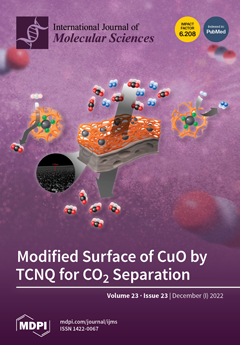Open AccessArticle
Longitudinal Analysis of Urinary Cytokines and Biomarkers in COVID-19 Patients with Subclinical Acute Kidney Injury
by
Gustavo Casas-Aparicio, Claudia Alvarado-de la Barrera, David Escamilla-Illescas, Isabel León-Rodríguez, Perla Mariana Del Río-Estrada, Mauricio González-Navarro, Natalia Calderón-Dávila, Rossana Olmedo-Ocampo, Manuel Castillejos-López, Liliana Figueroa-Hernández, Amy B. Peralta-Prado, Yara Luna-Villalobos, Elvira Piten-Isidro, Paola Fernández-Campos, Alejandro Juárez-Díaz, Karolina Piekarska and Santiago Ávila-Ríos
Cited by 4 | Viewed by 1588
Abstract
In hospitalized COVID-19 patients, disease progression leading to acute kidney injury (AKI) may be driven by immune dysregulation. We explored the role of urinary cytokines and their relationship with kidney stress biomarkers in COVID-19 patients before and after the development of AKI. Of
[...] Read more.
In hospitalized COVID-19 patients, disease progression leading to acute kidney injury (AKI) may be driven by immune dysregulation. We explored the role of urinary cytokines and their relationship with kidney stress biomarkers in COVID-19 patients before and after the development of AKI. Of 51 patients, 54.9% developed AKI. The principal component analysis indicated that in subclinical AKI, epidermal growth factor (EGF) and interferon (IFN)-α were associated with a lower risk of AKI, while interleukin-12 (IL-12) and macrophage inflammatory protein (MIP)-1β were associated with a higher risk of AKI. After the manifestation of AKI, EGF and IFN-α remained associated with a lower risk of AKI, while IL-1 receptor (IL-1R), granulocyte-colony stimulating factor (G-CSF), interferon-gamma-inducible protein 10 (IP-10) and IL-5 were associated with a higher risk of AKI. EGF had an inverse correlation with kidney stress biomarkers. Subclinical AKI was characterized by a significant up-regulation of kidney stress biomarkers and proinflammatory cytokines. The lack of EGF regenerative effects and IFN-α antiviral activity seemed crucial for renal disease progression. AKI involved a proinflammatory urinary cytokine storm.
Full article
►▼
Show Figures






